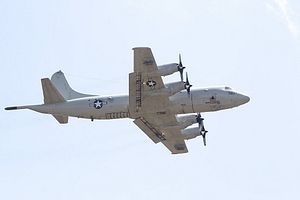As I reported previously, the Philippines and Japan carried out their second ever joint military exercises last week (See: “Philippines to Hold Military Exercises with US, Japan”). Apart from the exercises themselves, the past week has also saw several updates from Philippine officials about the next steps in the development of the defense relationship between Manila and Tokyo.
More details are beginning to surface about defense equipment transfers between the two sides. While Japan and the Philippines have already discussed particular items in Manila’s defense wish list, including patrol aircraft, submarines and destroyers, more specifics are being gradually disclosed in the public domain (See: “Japan, Philippines Boost Defense Ties”).
For one, the Philippines confirmed its earlier interest in acquiring the P-3C Orion surveillance aircraft from Japan. The plane, which was used for the first time in last week’s joint exercises between the two countries, is a widely-used multi-mission maritime long-endurance aircraft. Even though details – including the exact number of planes Manila is looking to acquire and the time frame – still remain unclear, Peter Paul Galvez, a spokesman for the Department of National Defense, revealed that the cash-strapped Philippines is exploring whether it can get the planes as an excess defense article – or second-hand – to lower the price significantly. He also said while no final decision had been made, the planes would probably be operated by the air force.
Philippine officials and military officers have noted that the P-3C Orion would be a significant boost to Manila’s capabilities. As one officer told Japanese media while on board the aircraft during the exercises, compared to the Philippine Navy’s patrol aircraft Islander, the P-3C has more sophisticated and extensive radar. which can cover a broader search area and monitor submarines. It also stays in the air for eight to ten hours, while the Islander has a flight endurance of just five-and-a-half hours.
Another item that received attention was the potential transfer of warships. A Philippine defense official was cited on condition of anonymity as saying that Manila had information that Tokyo would give them “a destroyer or frigate type of vessel,” but noted that it was not clear if weapons would also be included. While no further specifics were provided, previous reports had indicated that the vessels might be Japan’s Shirane-class destroyers, which were first commissioned in the 1980s.
The Philippines is also inching toward securing a visiting forces agreement (VFA) with Japan. As I have written previously, talks were publicly announced during Philippine president Benigno Aquino III’s visit to Japan earlier this month (See: “Japan, Philippines Seeking New Pact on Military Bases”). Speaking at a roundtable on the agreement last week, Philippine defense secretary Voltaire Gazmin reiterated the need for such an agreement in order for Manila and Tokyo to carry out more extensive military exercises in line with the Philippine constitution – which only allows foreign military bases, troops, or facilities in Philippine territory under a treaty with Senate concurrence. The recent joint exercises between Manila and Tokyo have raised concerns among some that the government is seeking to circumvent the process of getting an agreement before engaging in such activities.
The content of a new VFA, Gazmin said, would involve the exchange of military defense equipment and technology as well as educational and personnel exchanges. He also admitted that despite the excitement about a VFA, it would take time to conclude such a deal, citing the example of a similar pact with Australia that took seven years before being approved in September 2012. Given that, Gazmin said, the pact is unlikely to be finalized under the Aquino administration, which will be replaced following the 2016 elections.
Even though some of the areas of cooperation within the Japan-Philippines defense relationship may move more slowly than others, the substantial progress achieved in just the last few years is nonetheless quite remarkable. As Gazmin himself noted, some of the initiatives now being contemplated by the two sides – including sharing defense equipment and technology – would have been unthinkable previously.
































